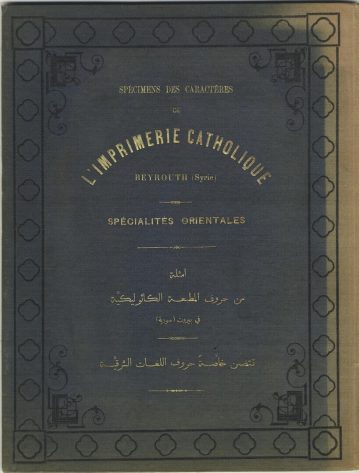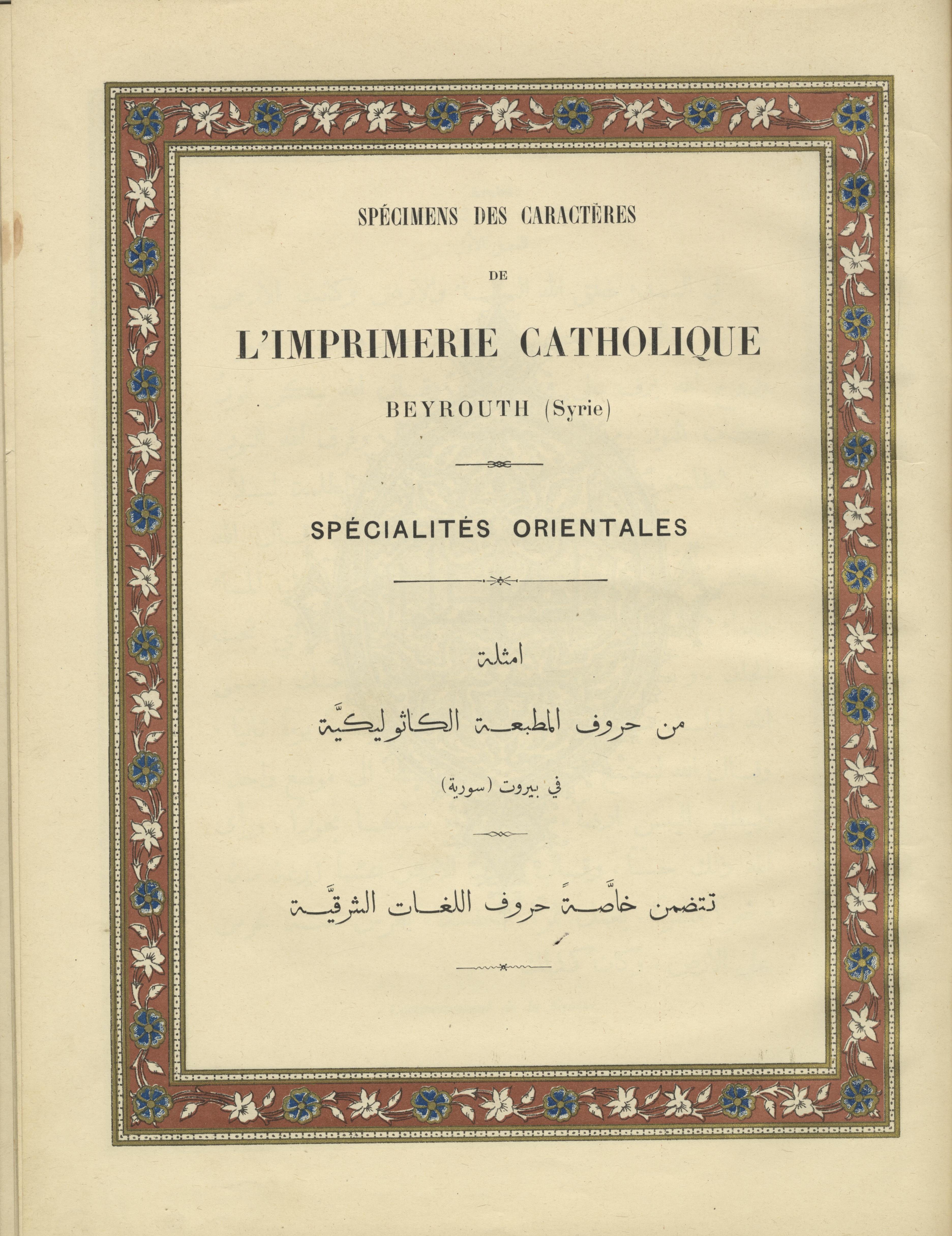Spécimens des Caractères de l’imprimerie Catholique, Beyrouth.
Imprimerie Orientale. Beyrouth.
Synopsis
L’Imprimerie Catholique (The Catholic Printing House in Beirut), is one of the most important, perhaps the most important of all missionary printing projects.
The American Protestant mission had reaped multiple advantages from its Arabic-language press, one of the best in what was then called Syria. Just as they founded the Université Saint-Joseph to counter the influence of the American University (called the Syrian Protestant College until 1920), the Jesuits opened an Arabic printing house in 1847 to match the Americans. Initially, they were not competitive; for several years the Society had to content itself with a small manual press (autographie), which until 1852 published about a dozen works by Edouard Billotet, S.J. In 1852, according to Jean-Baptiste Piolet, a pilgrim from the Holy Land who wanted to distribute the pamphlet l’Imitation de Jésus-Christ en Syrie, donated five thousand francs for the purchase of a better printing press, enabling larger-scale production. Henceforth, Antoine Tallon S.J. took over as its director, with As’ad El-Khoury as second-in-command. El-Khoury received the title of officer of the academy from the French government in recognition of his fifty years of service (he died in 1902). In 1854, the newly efficient press produced two thousand copies of L’imitation.
According to Billotet, the printing house bought Roman characters in 1855, obtained two more presses from the Oeuvre des Écoles d’Orient (in 1856 and 1861, respectively) and acquired a small three-horsepower steam engine in 1867. The expanding and increasingly technologically advanced press published several educational books from the 1860s to the 1880s. In the course of a single year, 1860, the printing house produced thirty thousand copies, with approximately fifty previously unreleased works. Its production rose to sixty thousand by 1863. The style of the press continued to develop alongside its output. Elijah Marie Elias, who had been involved in training new workers and investing in new fonts for the press since 1861, served as director from 1869 to 1901. Elias, trained at a Paris printing house, transformed Beirut’s press into the most important publisher in the Ottoman Empire. In 1875–1876, he printed an Arabic Bible, which won the gold medal at the 1878 Paris Exposition; the citation referred to “the perfection of its fonts, [which] set it apart from all other Arabic publication available at the time.”
The press also produced two other important periodicals (al-Bashir and al-Mashriq), and each year produced more and more works. It became a flagship in Orientalist studies throughout the world, and contributed to the development of the university library by attracting scholars to research and publish on Middle Eastern studies. The rich collection of volumes, collections, and periodicals in different languages, along with a trove of unpublished works, found in the Oriental Library benefited from the activities of the university and the journals, expanding its holdings and developing a reputation as a center for Orientalists. While this work was interrupted by the First World War, its historical significance remains, and it should be acknowledged as an important chapter in the history of Jesuit book collections.
[Brill.com/journals/Journal of Jesuits Studies, Volume 2, Issue 2].








